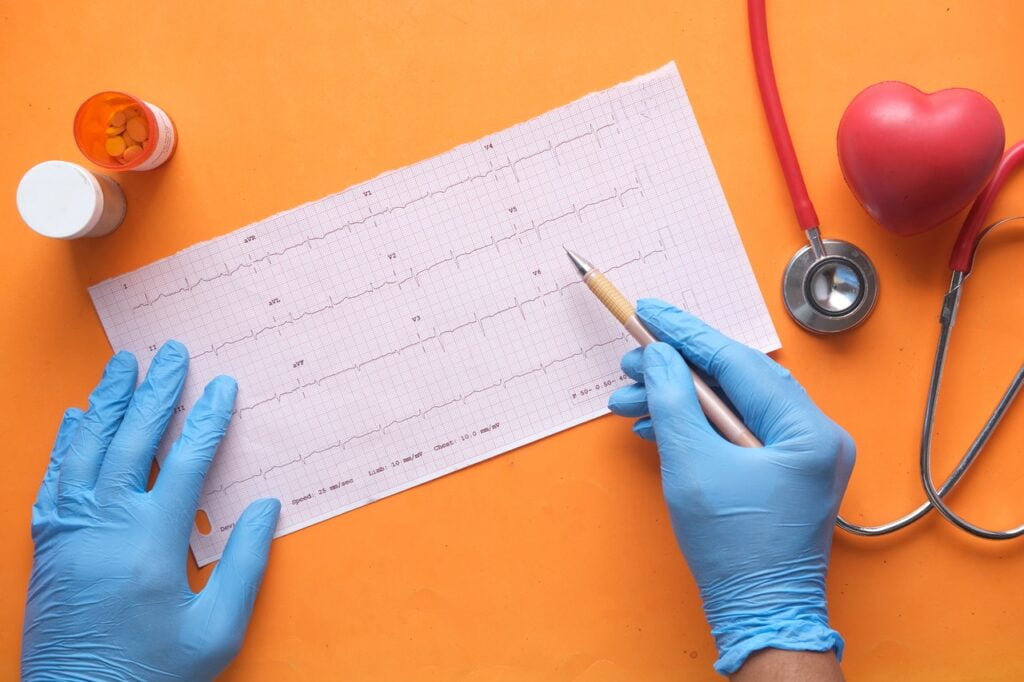You probably have a mental image of the cardiopulmonary resuscitation (CPR) technique and can easily visualize people thrusting their hands over the chest of another in an attempt to restore the heartbeat. But do you know what is actually happening on an anatomical and physiologic level when a person is performing CPR? If not, you’re not alone.
In fact, research from the Cleveland Clinic shows that only 11% of Americans know proper CPR techniques, let alone the science that underlies them.
Here’s everything you need to know about how CPR works, and how effective CPR techniques can help save a life.
Understanding Cardiopulmonary Anatomy and Physiology
To understand the biological basis of CPR, it’s important to first think about the heart and its relationship to the rest of the body. The heart is a four-chambered muscle that sits beneath the rib cage, nestled between the lungs, shifted slightly to the left side.
Getting cues from both the brain and its electrical heart cells, the heart contracts an average of 60 to 100 times per minute, pumping blood from the left side of the heart out to blood vessels, then refilling.
The blood vessels that receive the blood form a pipeline throughout the body, delivering freshly oxygenated blood to organs. Blood then returns to the right side of the heart, where it is pumped into the lungs to release carbon dioxide molecules and be infused with fresh oxygen, and then it returns to the left side of the heart to begin the cycle all over again.
What Happens During Cardiac Arrest
The phenomenon of cardiac arrest means-quite literally-the heart arrests or stops beating. This can be due to a problem with the electrical circuitry, an abnormal rhythm, the heart’s blood supply, a toxin, or something else.
Regardless of the reason, the consequence is the same: Blood stops being pumped throughout the body. This means that the body’s cells stop receiving fresh oxygen, which is a critical molecule for them to function and survive. After mere minutes without fresh blood, cells die. Sadly, irreversible brain damage can occur within minutes of not having a heartbeat, according to a report in BBC News.
How CPR Replaces a Heart Beat
During CPR, a lifesaver effectively mimics a beating heart through mechanical compressions. When the person pushes hands down on an arrest victim’s chest, the left side of a victim’s heart pushes blood out to their body, and the right side of their heart pushes blood to the lungs.
When the hands are lifted, both sides of the victim’s heart refill with blood. Each push and release also helps push air out of the lungs and draws air back in, too, so the blood oxygenation process can continue. Depending on the situation, a rescuer may also deliver rescue breaths, though the Huffington Post reports that this practice is not advised during the COVID-19 pandemic-hands-only CPR is currently the safest method for everyone involved.
Knowing what’s occurring at an anatomic and physiologic level during CPR makes it easy to see how this essential technique can buy time for emergency medical services to arrive at a scene. Sometimes, arrest victims might spontaneously recover before official help arrives.
The Importance of CPR
Cardiac arrest can be a devastating event, one that 450,000 Americans suffer from each year. Unfortunately, when cardiac arrest happens outside of the hospital setting, it results in death nine times out of 10, according to the U.S. Centers for Disease Control and Prevention (CDC).
However, when CPR is performed properly, and within minutes of a cardiac arrest, it can help increase the chances that a person will survive the cardiac arrest by two to threefold. Obtaining your CPR certification can help you save lives. At the American Academy, our CPR certification courses are free to access and come with a variety of flexible offerings.








Leave a Comment
You must be logged in to post a comment.